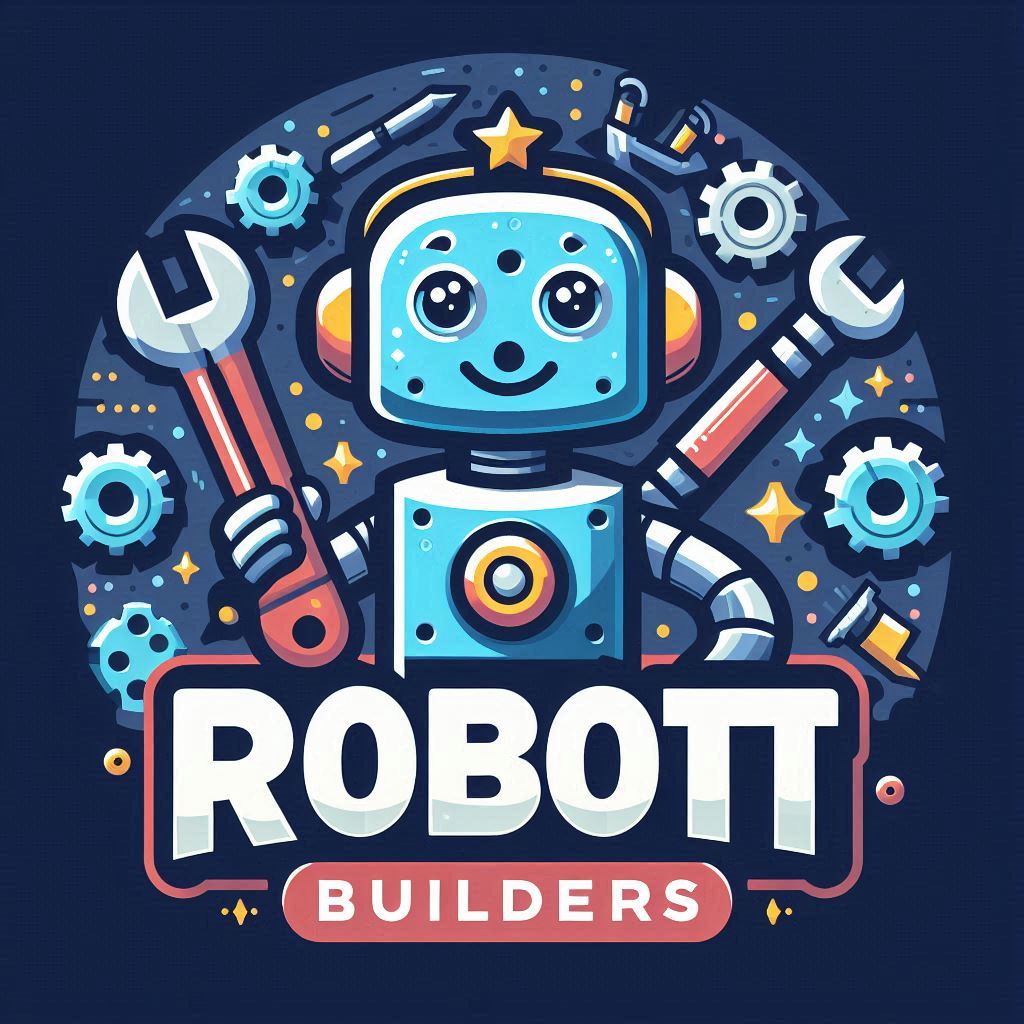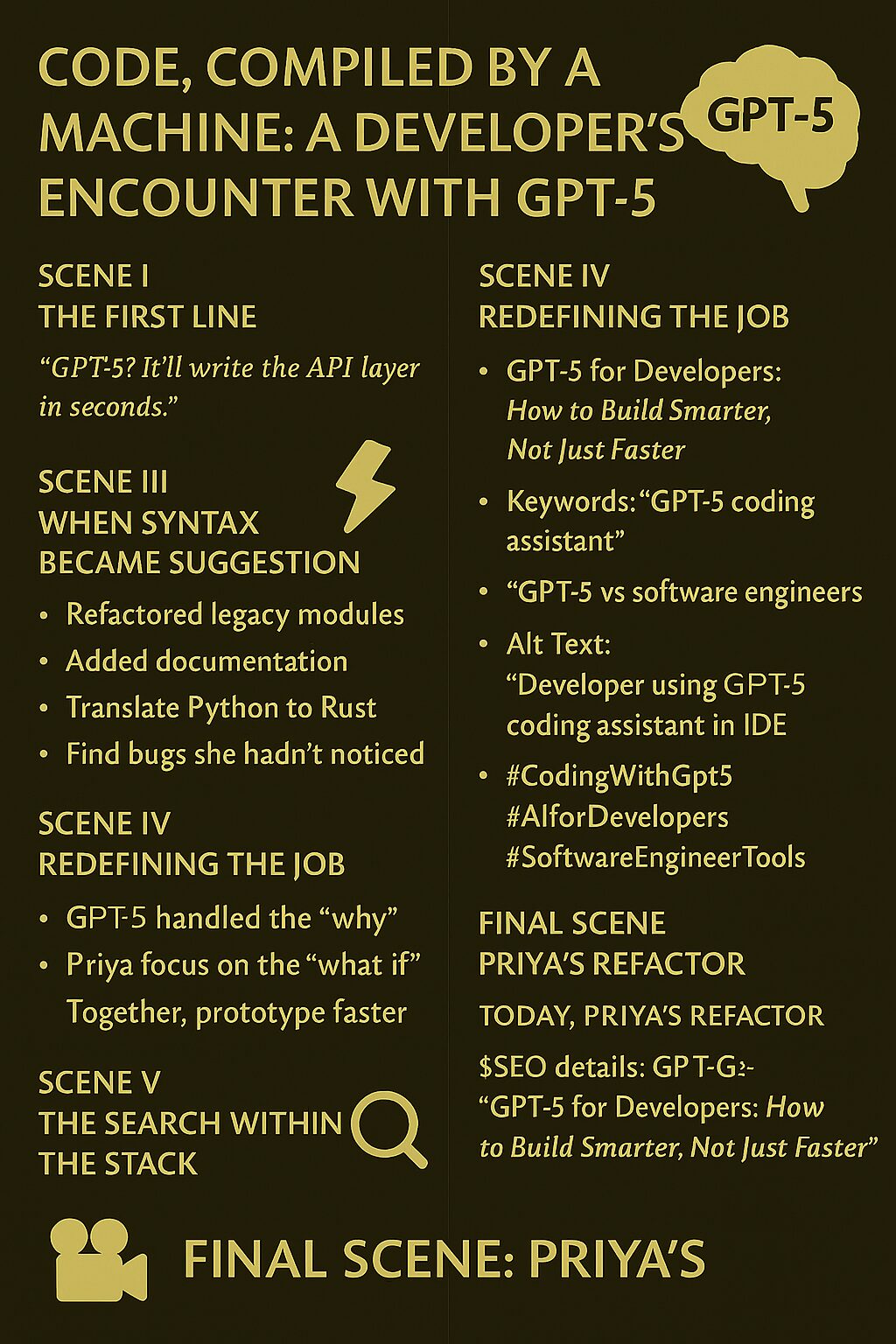Introduction
With the release of GPT-5, OpenAI’s most advanced language model, the tech world is buzzing with a provocative question: Will GPT-5 replace software engineers? As AI continues to evolve, developers and businesses are reevaluating the role of human coders in a landscape increasingly shaped by intelligent automation.
This article explores GPT-5’s capabilities, limitations, and its real-world impact on software engineering—offering insights for developers, CTOs, and tech recruiters navigating the future of coding.
🧠 What GPT-5 Can Do for Coders
GPT-5 introduces powerful upgrades that make it a formidable coding assistant:
✅ Code Generation
- Writes functions, classes, and entire modules from natural language prompts
- Supports multiple languages including Python, JavaScript, C++, Rust, and Go
- Can refactor legacy code and suggest performance optimizations
✅ Debugging & Troubleshooting
- Identifies syntax errors and logic flaws
- Suggests fixes and explains bugs in plain language
- Integrates with IDEs and version control systems (via plugins)
✅ Documentation & Comments
- Auto-generates docstrings and inline comments
- Summarizes code behavior for easier onboarding and maintenance
✅ Code Translation
- Converts code between languages (e.g., Python to Java)
- Preserves logic while adapting syntax and idioms
⚙️ GPT-5 vs. Human Engineers: Feature Comparison
| Capability | GPT-5 | Human Engineers |
|---|---|---|
| Code Generation | Fast, scalable | Creative, context-aware |
| Debugging | Pattern-based | Deep reasoning, system-level insight |
| Architecture Design | Limited | Strategic, scalable, secure |
| Collaboration | None | Team-based, empathetic, iterative |
| Innovation & Creativity | Predictive | Original, disruptive |
| Adaptability | Requires retraining | Learns new tools and frameworks quickly |
🚧 Limitations of GPT-5 in Software Development
Despite its strengths, GPT-5 cannot fully replace software engineers:
- Lacks Contextual Judgment: GPT-5 doesn’t understand business goals, user needs, or ethical implications
- No Real-Time Collaboration: Cannot brainstorm, negotiate, or adapt in team environments
- Security & Compliance Risks: May generate insecure or non-compliant code without oversight
- Limited Architectural Thinking: Cannot design scalable systems or make trade-offs across tech stacks
- Fails in Ambiguity: Struggles with vague requirements or evolving project scopes
💼 How Developers Can Use GPT-5 Effectively
Rather than fearing replacement, developers can leverage GPT-5 to enhance productivity:
- Use GPT-5 for boilerplate code, freeing time for architecture and design
- Automate unit testing, documentation, and code reviews
- Accelerate learning new languages or frameworks with AI-generated examples
- Collaborate with GPT-5 as a virtual pair programmer for ideation and prototyping
📈 SEO Tips for GPT-5 Coding Content
✅ Search-Friendly Titles
- “GPT-5 for Developers: Will AI Replace Coders in 2025?”
- “How GPT-5 Is Changing Software Engineering Forever”
✅ High-Impact Keywords
- “GPT-5 coding assistant”
- “AI replacing software engineers”
- “GPT-5 vs human coders”
✅ Metadata Optimization
- Alt Text: “Comparison chart showing GPT-5 vs software engineers in coding tasks”
- Tags: #GPT5Coding #AIForDevelopers #SoftwareEngineering2025 #GPT5VsHumanCoders #AIProgrammingTools
Final Thoughts
GPT-5 is not a replacement—it’s a revolutionary tool. While it automates routine coding tasks, it lacks the creativity, judgment, and collaboration that define great software engineering. The future belongs to developers who embrace AI as a partner, not a competitor.
💬 Want help integrating GPT-5 into your dev workflow or building AI-enhanced coding pipelines? I’d be happy to assist—line by intelligent line.

